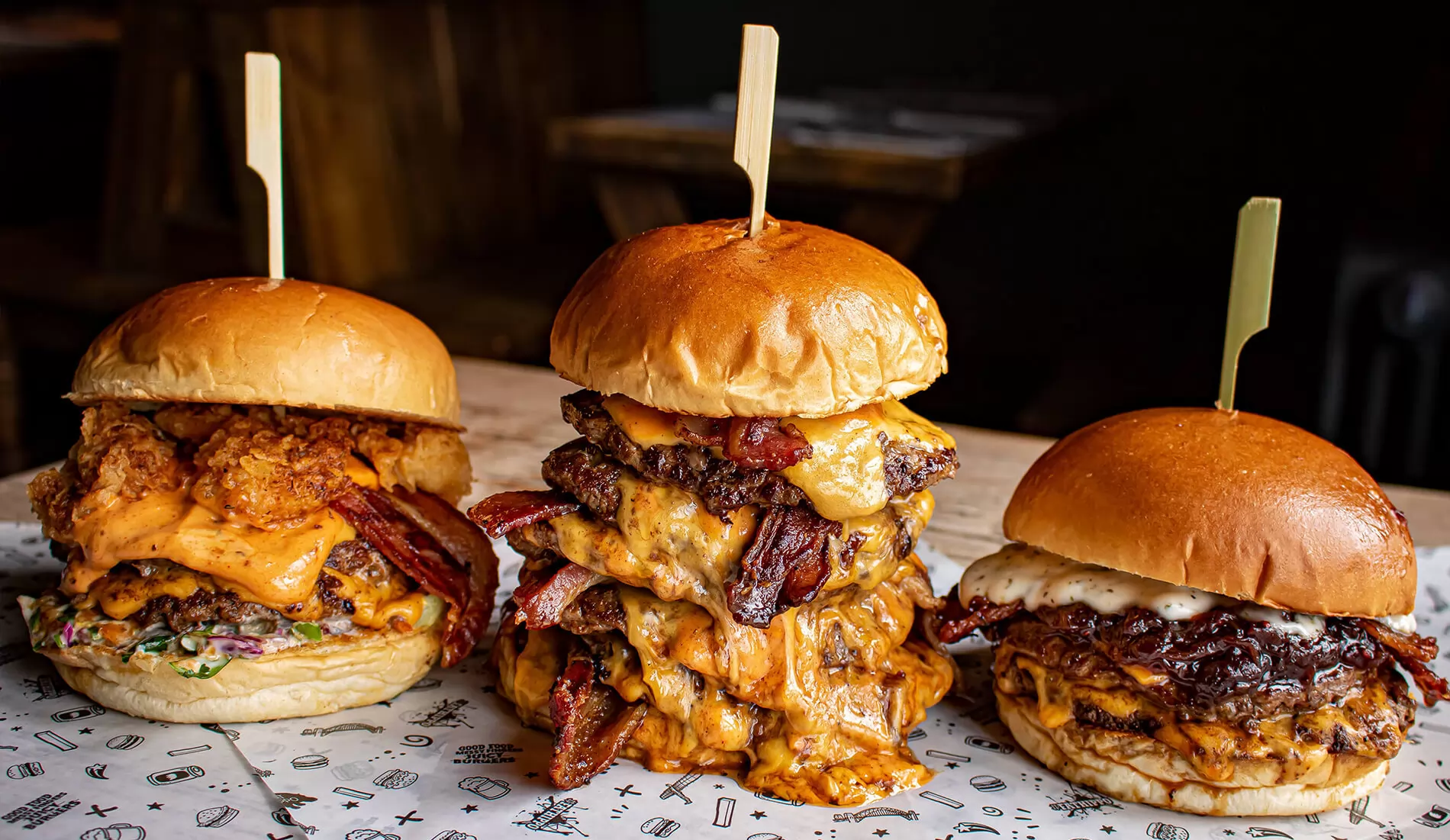We recently spoke to Mick Johnson, Operations Director at Fat Hippo about their experience using Tenzo and a best-in-class integrated tech stack. Download the full case study or continue reading to see Fat Hippo’s results for yourself.
About fat Hippo

Fat Hippo currently operates eighteen sites across the UK, specialising in dirty burgers and fries. Founded 14 years ago just outside of Newcastle, the concept took inspiration from the emerging burger scene in London and was one of the first businesses to really embrace the food influencer and blogger network to bring in a new generation of diners.
Value and guest experience have always been central to their concept and as they grew they knew they needed the support of a watertight tech stack to give them the tools to scale without losing that personal touch.
The Tech stack
Fat Hippo implemented cloud-based systems that could support a growing business.

Staff scheduler: Planday
Previously, the team used spreadsheets to manage their rota, but that quickly became unsustainable as the business grew. “Using spreadsheets at the size we are now – I can’t even imagine it, it would be a full-time job.”
Thankfully, Planday’s rota tool allows the management team to see wage percentages, schedule against forecasts pushed into Planday from Tenzo and makes the team’s life easier with templates for different levels of demand. The HQ team has remote access and much more control over their rotas thanks to the app.
The tool has allowed the team to schedule ahead of time and give the team much more stability. Schedules are agreed two weeks in advance and holidays and time off is easily monitored so everyone knows where they stand.
Inventory management: Marketman
Using Marketman has given the team much more visibility into where food costs are coming from. “The daily Gross Profit and food reporting is what I’m concentrating on. I don’t want to find a site with high wastage at the end of the month. I want to address it on a daily basis.”
Marketman has really helped the team cut down on wastage. They can see trends and use the tool to educate the food team. “For example, if you are throwing out a block of cheese every week, let’s have a discussion on why that may be.” Having that kind of visibility has helped the team have better control of food costs.
Tenzo forecasts are also pushed into Marketman to give demand forecast consistency across all tools.
Epos: Lightspeed
The team uses Lightspeed as their point of sale together with their integrated payments. Having payments and POS in the same system has meant quicker processing. The team particularly like the integrated gratuity function.
A POS that integrates with their full tech stack was important for the team and Lightspeed fit right into that piece of the puzzle.

Performance management: Tenzo
Bringing all of Fat Hippo’s operational data together, Tenzo gives the team 360-degree visibility of their revenue and their costs. The consistency of data and insights for the entire team is key. “We all need to be looking at the same things and analysing the same data.”
Having that real-time view means no potential efficiencies are missed. “I look at Tenzo first thing in the morning and last thing at night. We’re at 18 sites, and if you take the foot off the gas , you could be looking at a variance of £5,000 to £10,000 and we’re not the kind of company that sits and discusses things at the end of the month. It’s live all the time. It’s a live discussion.”

Nb all data shown is demo data and does not reflect Fat Hippo’s performance or targets
How do Fat Hippo use Tenzo to improve performance?
Labour costs
It was extremely important to the team to have a daily live view of labour costs. A cost that they’re very keen to control, having a live view of the planned labour hours today split by back and front of house first thing in the morning has been instrumental.
“We try our best to get away from that knee-jerk reaction. If we’ve settled on a rota, let’s just go for it and grab the sales. But then again, if you’ve had say three days of torrential rain in Cardiff and you’re trending a higher than expected Labour %, common sense tells you to react.”

Spend per head
In order to combat rising costs, the team are focused on increasing spend per head, but not necessarily by just increasing prices. They have daily lunch and dinner SPH targets and scorecards that GMs can easily access to see how they’re performing vs target in real-time.
“Myself and the MD strive to keep our prices affordable, without sacrificing quality, the systems will flag price changes, giving us the opportunity to renegotiate or look at alternatives and adjust.”
This allows the teams to focus on the attachment rate of add-ons ensuring there’s an emphasis on starters, desserts, and additional drinks.

Daily Scorecard
The scorecard dashboard allows head office to get a comprehensive overview of what’s happening in the business in real-time, from live cost of labour as a percentage of sales, to discount metrics.
“I asked for discounts to be put on the daily snapshot so I knew we had daily eyes on it. We’ve got a certain tolerance in place, which can be easily tracked and highlight any issues from the previous day.”

Results that speak for themselves
With increased visibility, the team have been able to focus on efficiencies without sacrificing service. When asked about results from Tenzo, Mick had this to say:
“Some of the savings are massive year on year. It’s all about pre-empting. You’re on the forefoot. Tenzo gives you that ability to highlight potential savings and control costs. There’s no point talking about a dip in sales at the end of the week and how we’re going to generate more revenue. Control in the moment is key.”




